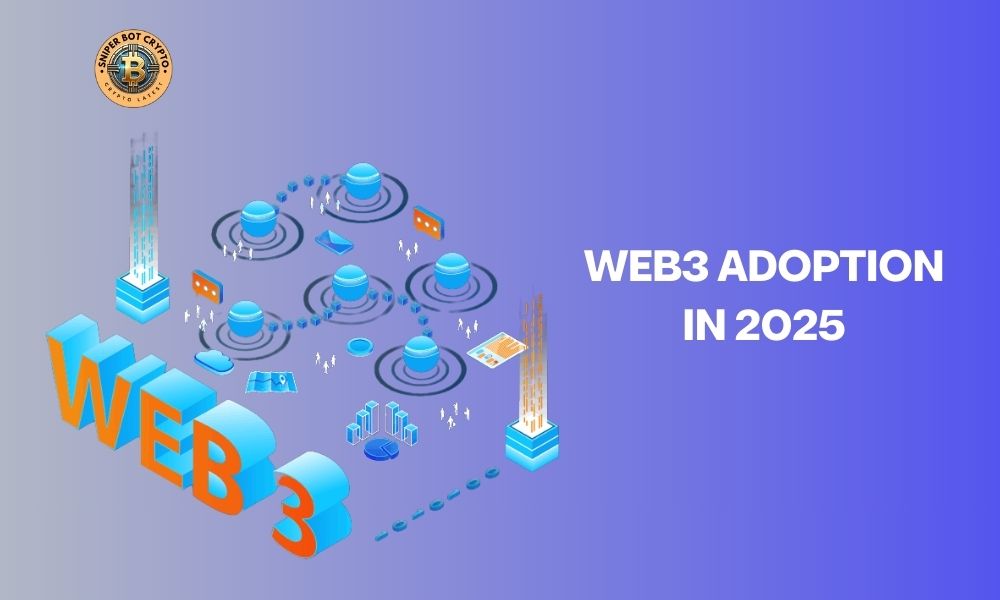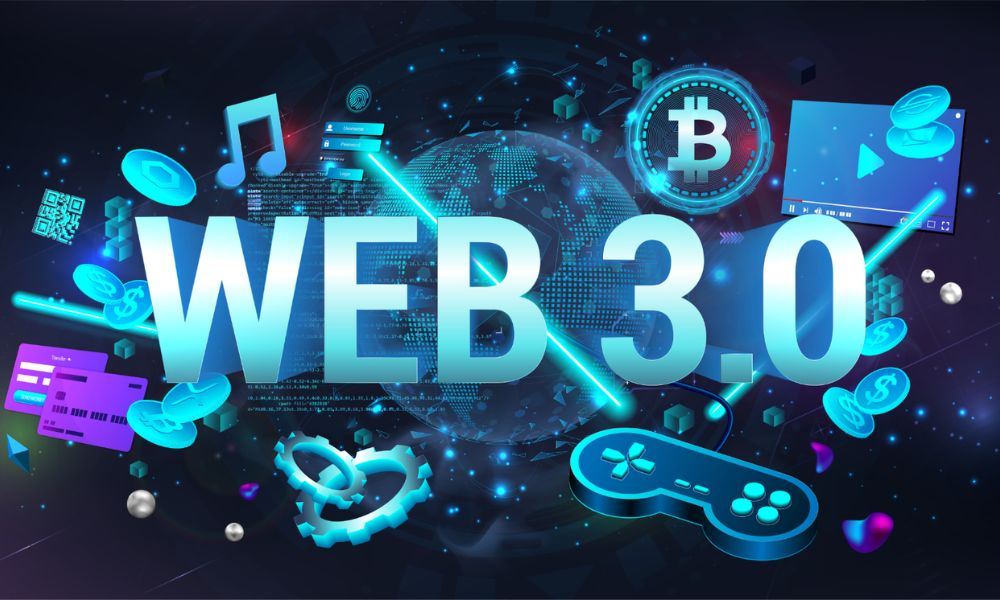Web3 adoption in 2025 is entering a booming phase, driven by strong participation from both individual users and institutions. From decentralized finance to the metaverse and decentralized applications (dApps), the shift toward Web3 is unlocking unprecedented trends and opportunities. However, alongside the potential come challenges related to security, user experience, and scalability. This article will give you a complete overview of Web3 in 2025, from emerging trends to strategies for maximizing its potential.
Contents
Overview of Web3 adoption in 2025

Web3 adoption in 2025 marks a significant leap in the real world implementation of decentralized technologies. No longer just a trend within the crypto community, Web3 is being widely adopted across sectors ranging from finance to healthcare. Blockchain, smart contracts, and NFTs are becoming essential tools for optimizing transactions, managing assets, and verifying identity. This transition represents a turning point in how people interact with technology. Users are now empowered with control over their personal data and digital assets.
Unlike the Web2 era, where centralized platforms held the power, Web3 promotes a trustless and self governing model. DAOs enable communities to participate in decision making processes in a more transparent and democratic way. Meanwhile, DeFi is expanding financial access to millions of unbanked individuals. Web3 products are no longer experimental, they are entering practical application stages. The rising adoption of decentralized wallets and dApps signals a clear and growing trend.
Beyond the financial sector, Web3 is reshaping industries like marketing, supply chains, digital identity management, and entertainment. Major brands are using NFTs to engage with customers, while blockchain ensures product traceability from start to finish. The metaverse is creating new spaces for work and leisure, attracting both enterprises and everyday users. This demonstrates that Web3 is not just the future, it’s becoming the present. At its current growth rate, Web3 has the potential to redefine the entire digital economy.
Trends driving Web3 adoption in 2025
Web3 adoption in 2025 is accelerating thanks to the expansion of blockchain applications across various industries. In decentralized finance (DeFi), major banks are beginning to integrate blockchain to improve transparency, cut operational costs, and expand global financial services. Meanwhile, gaming and entertainment are seeing a surge in blockchain based games, NFTs, and the metaverse, enabling users to own digital assets and build new virtual economies. Additionally, blockchain is being used in supply chains to enhance traceability and transparency, while physical assets like real estate, agricultural goods and art are being tokenized for easier trading.
Breakthrough technologies are a key driver in making Web3 more accessible to the masses in 2025. Scalability solutions like Layer-2s, AppChains, and zkRollups help reduce transaction fees and improve user experience, allowing decentralized apps (dApps) to serve millions of users efficiently. The integration of AI and blockchain also opens up new possibilities such as personalized services, data security and automation. These advancements not only improve system performance but also attract more developers and users into the Web3 ecosystem.
User adoption remains central to the growth of Web3 adoption in 2025. Decentralized wallets and dApps are becoming increasingly user friendly, lowering technical barriers for newcomers. Loyalty programs and DAOs are also gaining traction, allowing users to participate in governance and earn rewards through tokens or NFTs. This growing engagement fosters a strong sense of community ownership and helps Web3 expand to a broader audience around the world.
Challenges facing Web3 adoption in 2025
Despite strong momentum, Web3 adoption in 2025 still faces significant hurdles that could slow its mass adoption. One of the biggest issues is the legal uncertainty across different jurisdictions, where regulatory frameworks remain incomplete or inconsistent. This poses difficulties for scaling Web3 projects globally, especially for startups and institutional investors. Without clear legal guidelines, it’s hard for developers to innovate confidently or for users to feel protected. As a result, growth may remain concentrated in regions with favorable policies.
Security continues to be a major concern, with high profile hacks and smart contract vulnerabilities shaking user confidence. These incidents underscore the need for more advanced security solutions and rigorous auditing processes. Additionally, user experience remains a barrier, as many Web3 applications are still clunky, complex, or unintuitive. Without simplifying interfaces and onboarding processes, even users curious about Web3 may struggle to stay engaged. To truly expand, the ecosystem must prioritize both safety and ease of use.
Forecasting the future of Web3 adoption in 2025

Web3 adoption in 2025 is expected to mark a turning point as decentralized technologies mature and gain widespread acceptance. Moving beyond experimental applications, Web3 will penetrate industries such as finance, education, healthcare, and entertainment, offering more practical and seamless user experiences. Businesses will begin to integrate blockchain to enhance transparency and operational efficiency. This creates major opportunities for Web3 projects to build trust and attract real users. Such developments will shift how people interact with both technology and data.
Moreover, the convergence of blockchain, artificial intelligence, the Internet of Things (IoT), and the metaverse will give rise to comprehensive digital platforms that bridge the virtual and physical worlds. Applications will extend beyond finance into areas like digital ownership, personalized healthcare and decentralized education. By eliminating intermediaries and securing user data, Web3 will pave the way for a more democratic and transparent internet. However, challenges remain, ranging from technical infrastructure to regulatory frameworks and public awareness. As such, 2025 will be a pivotal year in shaping the long term, sustainable growth of Web3.
Driving forces behind Web3 adoption in 2025
Web3 adoption in 2025 will be propelled by several key factors that will shape its integration across industries. One of the primary drivers is the increasing demand for decentralization. Users are becoming more conscious of privacy and data ownership, pushing the demand for platforms that do not rely on centralized authorities. Blockchain technology, which is the backbone of Web3, offers an immutable, transparent, and secure way to handle data, making it more appealing for users and businesses alike. As privacy concerns grow, Web3 provides a solution that aligns with the changing needs of the global digital community.
Another significant catalyst will be the rise of cross industry partnerships and collaborations. As the technology matures, major corporations and enterprises are expected to adopt Web3 to enhance efficiency, reduce costs, and improve transparency in operations. For instance, financial institutions are already exploring decentralized finance (DeFi) solutions, and sectors like supply chain management, real estate, and healthcare are following suit. These industries will integrate Web3 principles into their business models, opening up new avenues for growth and customer engagement.
In 2025, these collaborations will drive the momentum needed for widespread Web3 adoption across the globe. Continue following Sniper Bot Crypto for detailed updates and opportunities for users navigating this transformative landscape.
